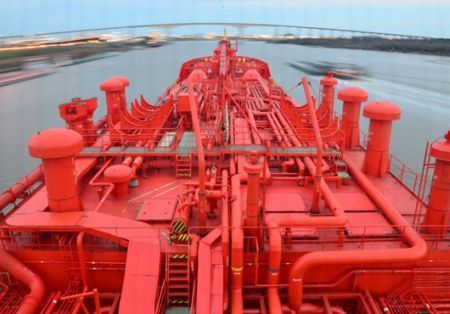
Each will be powered by a single MAN B&W ME-GI low-speed, dual-fuel engine. The engines will run on ethane, which ethylene carriers are also equipped to transport, and represents the first time ethane has been used as fuel to propel an oceangoing vessel.
Hartmann Schiffahrt, part of Hartmann AG, the German ship-owning and management group, has acted as technical leader on the LEGC project, while Gaschem Service, another Hartmann division, is commercially responsible for the employment of the vessel. The vessels are scheduled for delivery in August, October and December 2016 respectively.
MAN Diesel & Turbo reports that ethane was chosen as fuel, in preference to HFO, due to its more competitive pricing as well as the significantly shorter bunkering time it entails. As a fuel, its emissions profile is also superior to HFO – in which respect it is similar to methane – and compared to HFO contains negligible sulphur, 15-20% lower CO2and emits significantly fewer particles under combustion. MAN Diesel & Turbo also states that the ME-GI engines will be set up such that they can easily be converted to run on methane as an alternative, as per the owner’s wish.
MAN Diesel & Turbo reports that its ME-GI technology uses the Diesel cycle to maintain high efficiency and robust combustion with no need for any derating. The company also states that the engine – by virtue of its Diesel operating principle – will have negligible methane/fuel slip, one of many low-emission characteristics, and dispenses with the need for restrictive load ramps or other knock-preventing measures.
Ethylene carriers are generally considered the most sophisticated of all gas tankers and are capable of carrying most liquefied gas cargoes, but also ethylene at its atmospheric boiling point of −104 °C. These vessels have insulated, 5% nickel-steel cargo tanks and can accommodate most liquefied gas cargoes up to a maximum specific gravity of 1.8 at temperatures ranging from −104°C to +80 °C at a maximum tank pressure of 4 bar.
We use cookies to improve your experience. By continuing to use our site, you accept our Cookies, Privacy Policy,Terms and Conditions. Close X